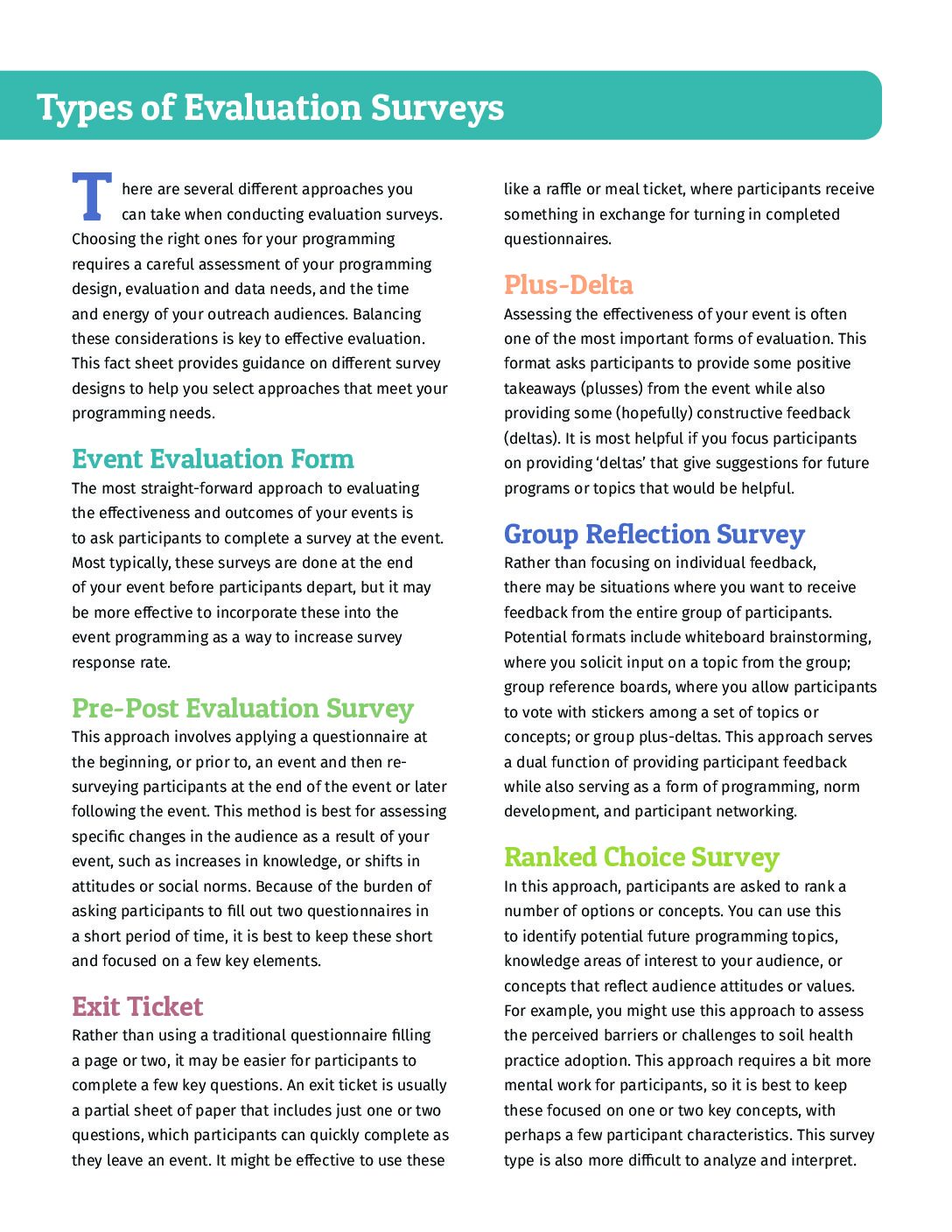Types of Evaluation Surveys
There are several different approaches you can take when conducting evaluation surveys.
Choosing the right ones for your programming requires a careful assessment of your programming design, evaluation and data needs, and the time and energy of your outreach audiences. Balancing these considerations is key to effective evaluation. This fact sheet provides guidance on different survey designs to help you select approaches that meet your programming needs.
Event Evaluation Form
The most straight-forward approach to evaluating the effectiveness and outcomes of your events is to ask participants to complete a survey at the event. Most typically, these surveys are done at the end of your event before participants depart, but it may be more effective to incorporate these into the event programming as a way to increase survey response rate.
Pre-Post Evaluation Survey
This approach involves applying a questionnaire at the beginning, or prior to, an event and then re-surveying participants at the end of the event or later following the event. This method is best for assessing specific changes in the audience as a result of your event, such as increases in knowledge, or shifts in attitudes or social norms. Because of the burden of asking participants to fill out two questionnaires in a short period of time, it is best to keep these short and focused on a few key elements.
Exit Ticket
Rather than using a traditional questionnaire filling a page or two, it may be easier for participants to complete a few key questions. An exit ticket is usually a partial sheet of paper that includes just one or two questions, which participants can quickly complete as they leave an event. It might be effective to use these like a raffle or meal ticket, where participants receive something in exchange for turning in completed questionnaires.
Plus-Delta
Assessing the effectiveness of your event is often one of the most important forms of evaluation. This format asks participants to provide some positive takeaways (plusses) from the event while also providing some (hopefully) constructive feedback (deltas). It is most helpful if you focus participants on providing ‘deltas’ that give suggestions for future programs or topics that would be helpful.
Group Reflection Survey
Rather than focusing on individual feedback, there may be situations where you want to receive feedback from the entire group of participants. Potential formats include whiteboard brainstorming, where you solicit input on a topic from the group; group reference boards, where you allow participants to vote with stickers among a set of topics or concepts; or group plus-deltas. This approach serves a dual function of providing participant feedback while also serving as a form of programming, norm development, and participant networking.
Ranked Choice Survey
In this approach, participants are asked to rank a number of options or concepts. You can use this
to identify potential future programming topics, knowledge areas of interest to your audience, or concepts that reflect audience attitudes or values. For example, you might use this approach to assess the perceived barriers or challenges to soil health practice adoption. This approach requires a bit more mental work for participants, so it is best to keep these focused on one or two key concepts, with perhaps a few participant characteristics.
 Download: Types of Evaluation surveys
Download: Types of Evaluation surveys

